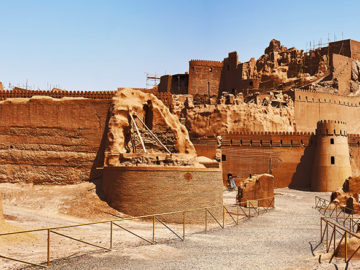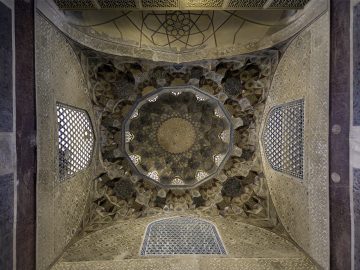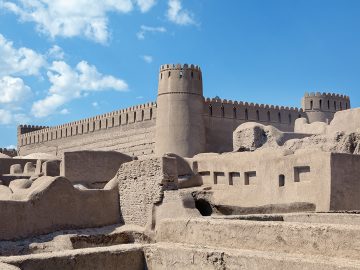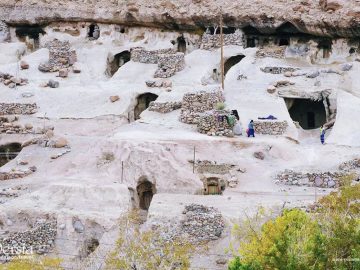Kerman province, located in the southeast of Iran, as the second-largest province of Iran has an area of 180,726 square kilometers. Kerman is neighboring the provinces of Hormozgan, Sistan and Baluchistan, South Khorasan, Yazd, and Fars. Most people in the province containing 23 counties are Fars and speak Farsi with the Kermani dialect.
Gandom Beryan region with the highest temperature of 67 ° C in summer is located 80 km northwest of Shahdad. In fact, the northern, northwestern, and central parts of the province have dry climates, while humidity is higher in its southern parts.
Historically, in the Behistun Inscription, the name of the state of Karmania or Kerman has been documented. Before the advent of Islam in Iran, the Arabs migrated to this area. During the empire of Sassanid (224-651 A.D.) Shir Jaan Shahr (Sirjan city in Kerman) was the center of governance.
During the first Abbasid Caliph, no major incidents occurred in Kerman but the Samanid (819-999), Buyid (934-1062), Ghaznavid, Seljuk (1037-1194) Khwarazmian (1077-1231), Muzaffarids (1314-1393), Timurid (1370-1507), Aq Qoyunlu (1378-1501), and Safavid (1501-1736) empires ruled over the area, respectively.
Ganj Ali Khan was one of the most famous Safavid leaders who built plenty of buildings in Kerman, known today under the title of the Ganjali Khan Complex. At the end of the Safavid period, Mahmoud Afghan attacked and plundered Kerman.
Following the death of Nader Shah and the revolt of the Afghans, Karim Khan Zand (reign: 1751-1779) released Kerman from the grasp of Afghans and founded the Zand Dynasty (1751-1794) accordingly.After the reign of Lotf Ali Khan Zand as the second Zand ruler, Kerman came under the control of the Qajar Dynasty (1796-1925) founded by Agha Mohammad Khan.
The natural, cultural, and historical attractions of Kerman province have made it find a special position, drawing the attention of foreign and domestic tourists.
In this respect, Arg-e Bam and its cultural landscape, Shazdeh Mahan Garden, Qanats of Joopar, Akbarabad, and Ghasemabad and Lut Desert have been registered in UNESCO World Heritage Site.
Some other attractions of the province include Kalut Shahdad desert, Rayen Castle, Ganjali Khan, and Ibrahim Khan’s Complex, Shāh Ni’matullāh Wali’s Tomb, the Great Market of Kerman, and Jabalieh Dome. Carpet of Kerman is one of the most famous and desirable carpets of Iran.
Saddlebag making, handwoven fabric, Pateh (needlework folk art), knife making, hand fan making, traditional tent-making, copper carvings, and mosaic with wood, and Termeh (a kind of handwoven cloth) are the main handicrafts of the province.
Among its souvenirs, it could be mentioned to a pistachio (especially Rafsanjan city pistachio), cumin, pistachio halva, Kolompeh (a type of sweet), henna, dates. The most prevailing dishes of the province are eggplant Halim, traditional bread, greasy bread, meat stew, milky wheat, Umaj Aush (a type of soup), Sholi Aush, zucchini Aush, and different forms of curd. The most prominent figures of Kerman include Shāh Ni’matullāh Wali (poet), Khwaju Kermani (poet), Mohammad Ebrahim Bastani Parizi (Historian and researcher), and Rūhollāh Khāleqi (Musician).




